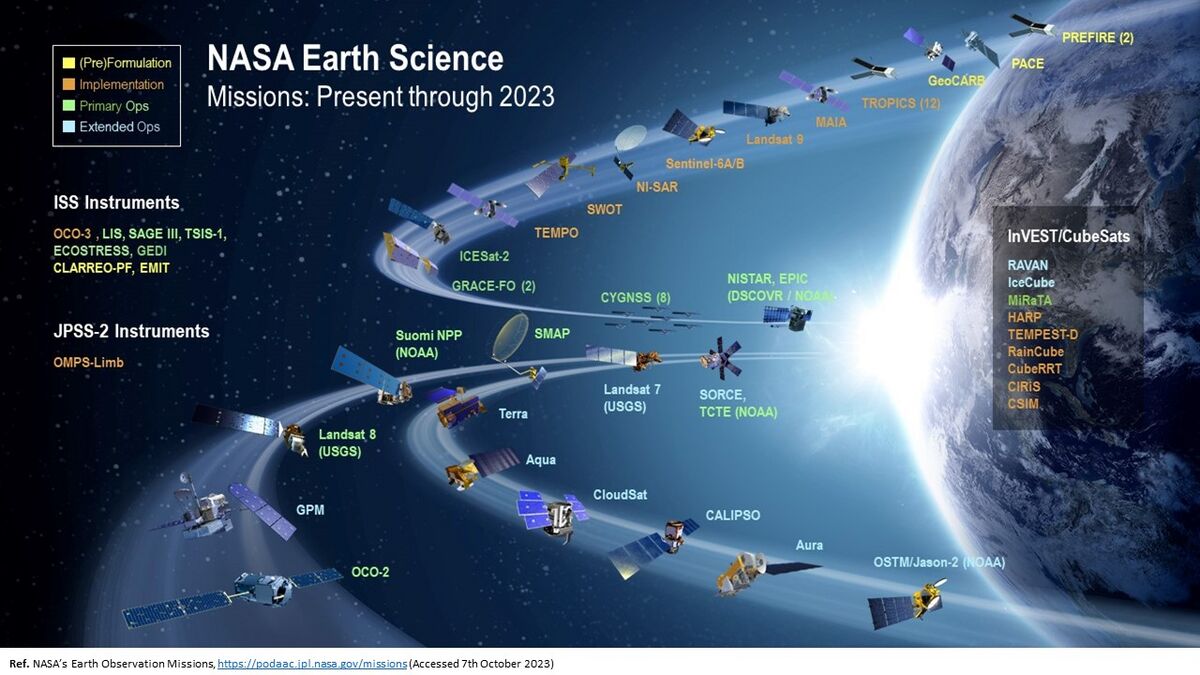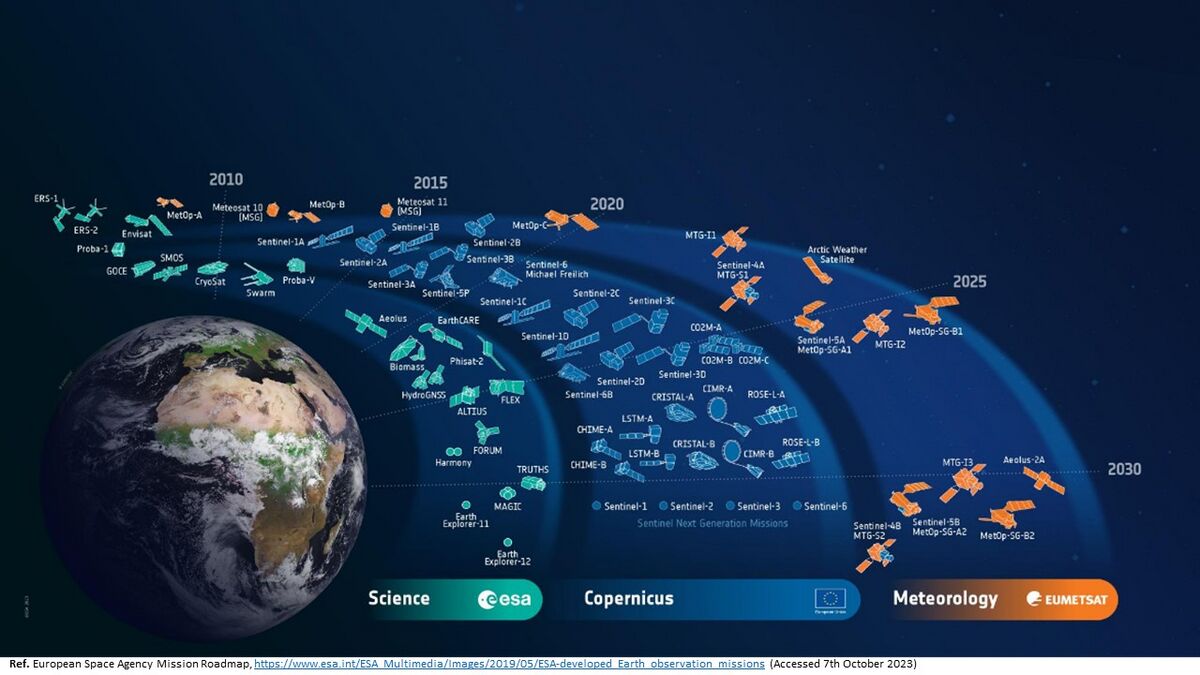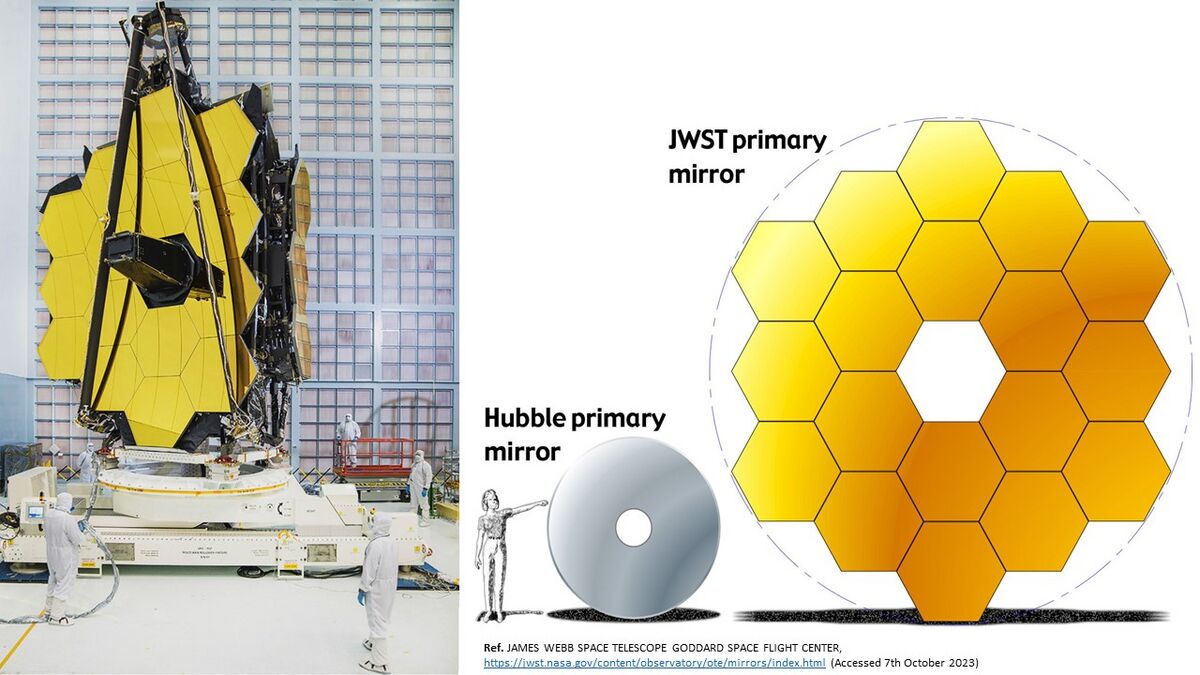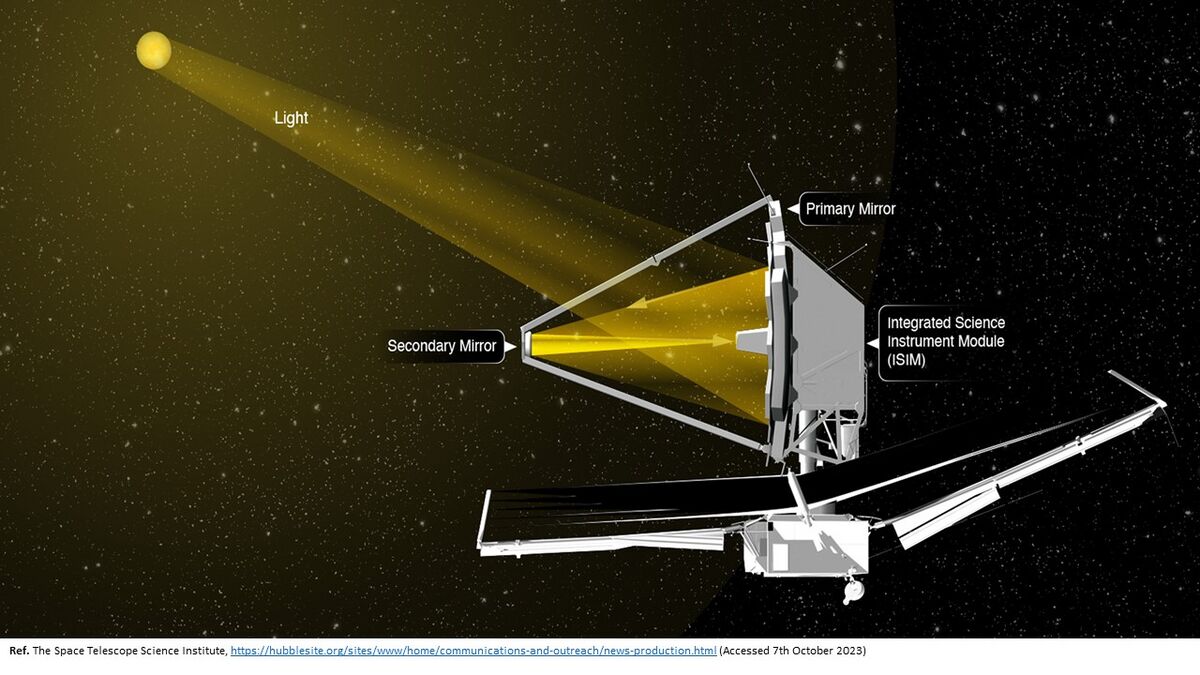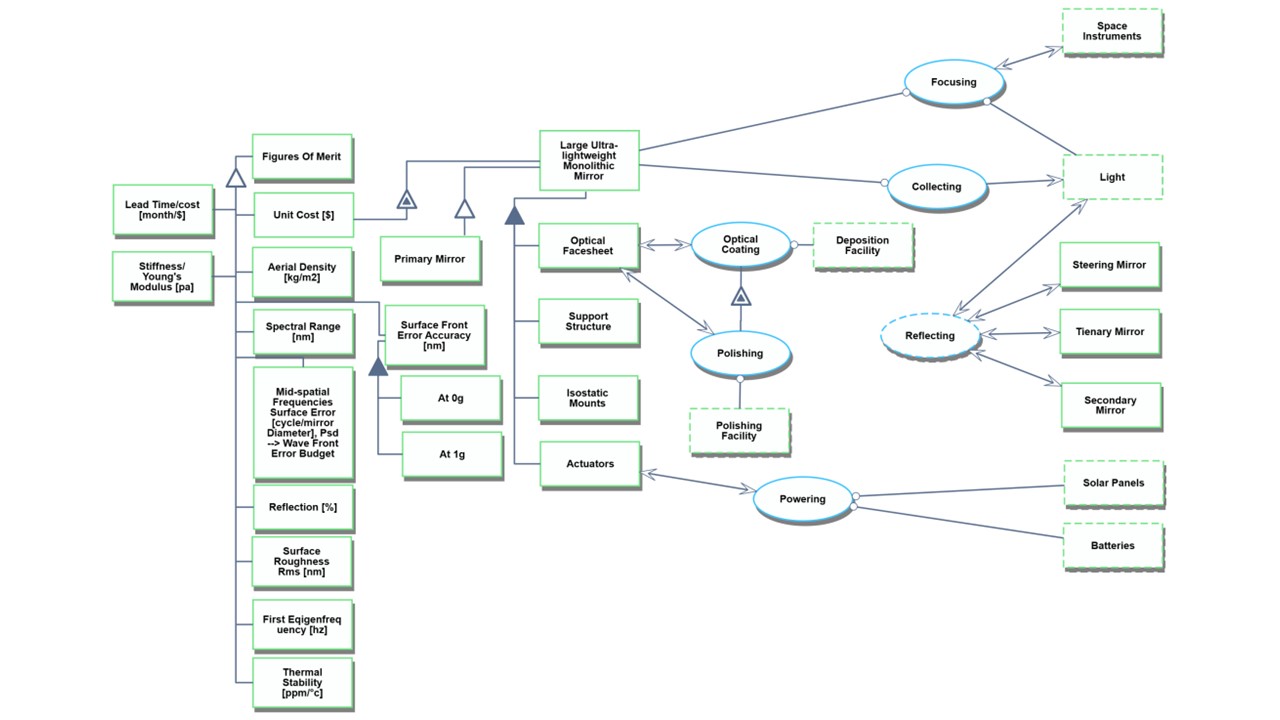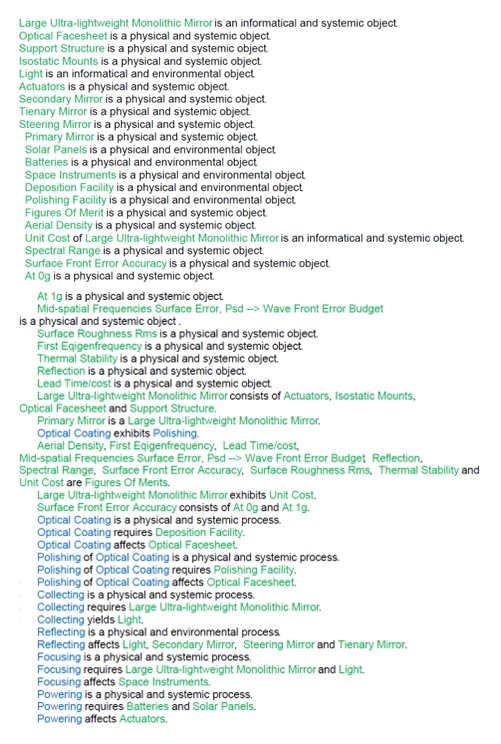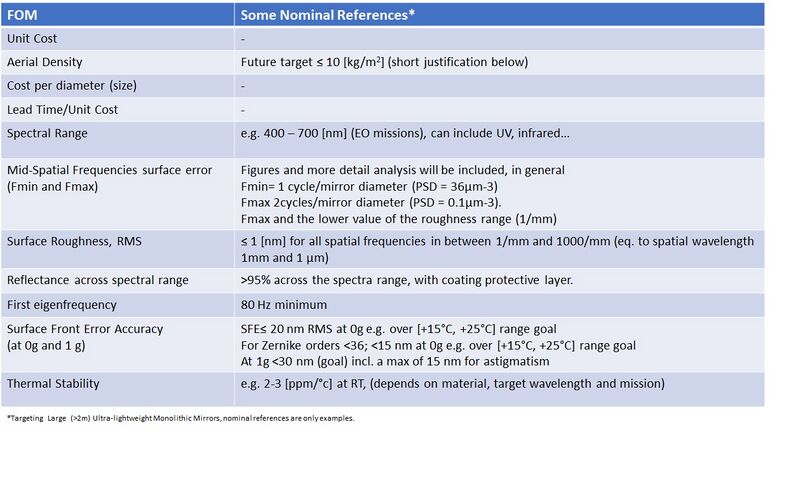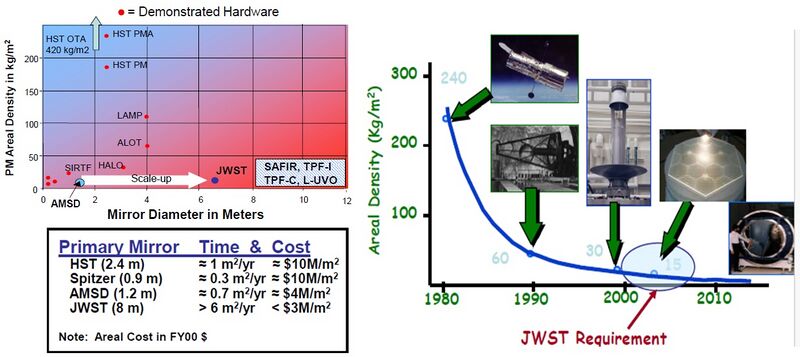Large Ultra Lightweight Monolithic Mirros for Space Missions
Technology Roadmap Sections and Deliverables
This is a technology roadmap for:
- 3LULMMFSM - Large Ultra-Lightweight Monolithic Mirros for Space Missions
Large-Ultra Lightweight Monolithic Mirrors (LULMM) (also enable segmented designs for space missions) - Mirrors are enabling technology for space based telescopes. Primary mirror size and quality is directly traceable to telescope performance. Every engineering advancement in space mirror technology has resulted in improved earth observation and science performance. Future large scale optical instruments for Earth Observation and Science missions will require very large primary mirrors with extreme light weighting. There has been significant technical evolution realized over the last years. However, the current level of light weighting is reaching the limit of classical techniques and decreasing optical performances due to side efforts, causing mission concepts with active correction capabilities which could be simplified by using alternative techniques for lighter and stiffer primary mirrors. The weight can be drastically reduced with designs based on a thin optical face sheets, which are attached to a stiff and lightweight support structures (e.g. honeycomb…).
Ultra precision mirrors are setting the space telescope design. Rare are the components whose design lies at such optimal crossroads between 3 major engineering fields (optical, thermal and mechanical), all the while challenging manufacturing and integration capacities in these same fields. The recent spotlight on JWST’s magnificently gigantic golden primary mirror, and the incredible pictures it helps create (figure below), has brought mirror design to the forefront of the public eye as well as the engineer’s, yet the subtle and skillful art and efforts which underlie a truly successful mirror design are not always obvious. This roadmap addresses previous, current and future needs of space mirror technologies.
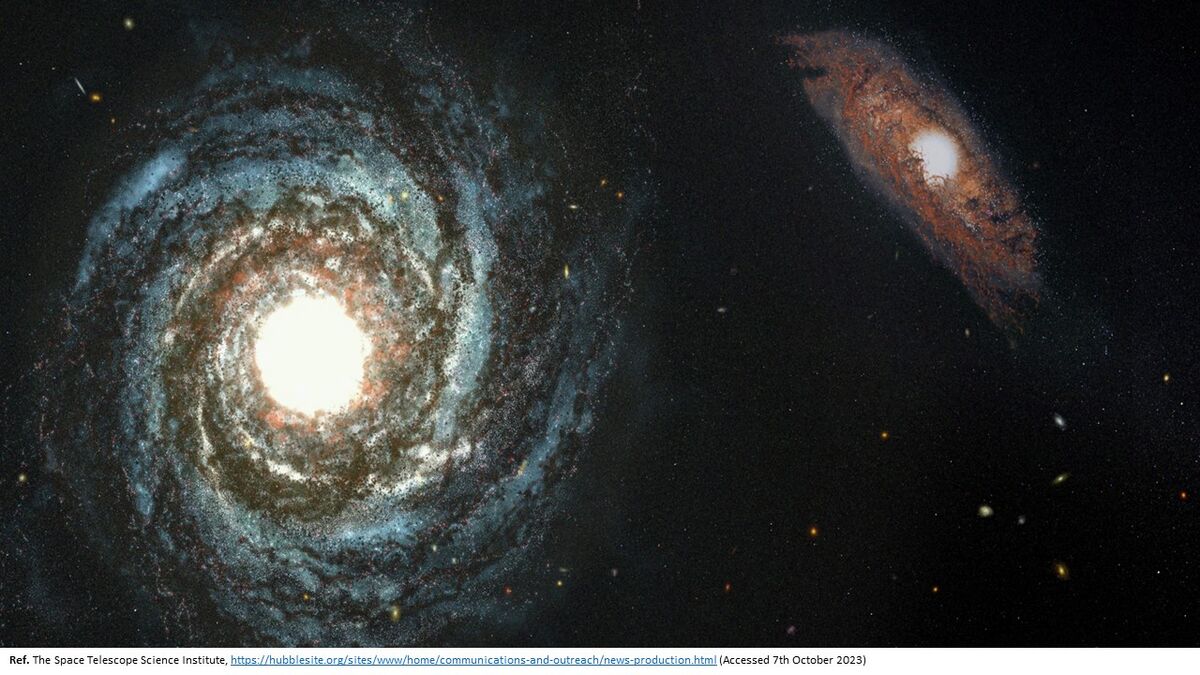
Roadmap Overview
Images show the Science and Earth Observation programs from the European Space Agency (ESA) and the National Aeronautics and Space Administration (NASA), indicating the needs for space mirror technologies.
Some critical elements enabling the LULMM include:
- large aperture, lowr-areal denisty and ultra-high stiff mirror substrates
- support structure
- mid/high-spatial frequency figure error
- segment-to-segment gap phasing
- mirror segment edges
- modeling and validation
Figure is showing the 5x5 Technology Matrix [Ref.1] with the position of 3LULMMFSM.
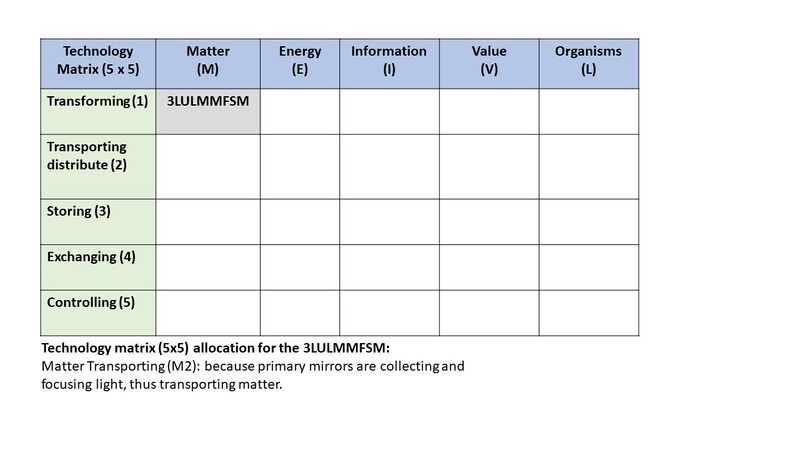
A significant amount of developments was carried out for ultra lightweight mirrors. Ball Aerospace demonstrated Beryllium mirrors with an aerial density as low as 9.8 kg/m m2. However , this was for a diameter 0.5m and without guaranteeing sufficient stiffness in order to survive the launch, similar as for the JWST where the mirrors have to be re-designed with a final aerial density of 28 kg/m m2, while the initial concept was aiming to achieve even below 15 kg/m m2.
A primary mirror of JWST has 6.5 meters (21 feet 4 inches) across, which is needed to measure the light from distant galaxies. Building a mirror this large was challenging, even for use on the ground. This size of the mirror had never before been launched into space, in comparison the Hubble Space Telescope 2.4 meter mirror is shown, which would be too heavy concept to launch into orbit for the JWST. For the JWST the stiff and light mirror was essential, thus having very low aerial density to enable this mission concept and objectives.
Technology advancements are progressing and now future must be prepared to enable areal densities less than 10 kg/m2, for large mirrors located in an optical system entrance cavity (e.g., scan mirror, primary mirror). This would enable key factor in the production of large monolithic mirrors (>2 meters) and segmented designs usable for EO and JWST successor like missions, thereby securing high resolution imaging capability for space systems in e.g., geostationary orbit.
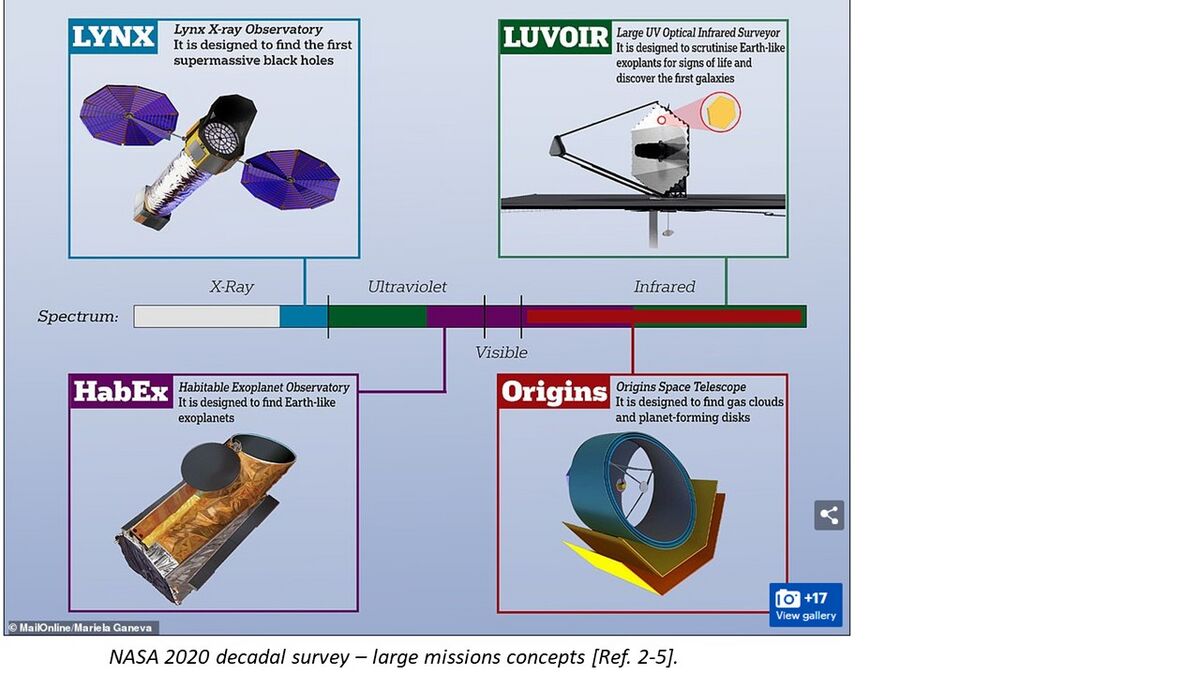
Space community, industry and agencies are addressing this gap seeking for next technological developments to enable low aerial density, ultra-high performance mirrors [Ref. 2-5] for:
- GEO mid.-high resolution observation
- Science missions
- Agile flat mirrors (Fast-steering, scanners…)
- ...
Design Structure Matrix (DSM) Allocation
The 3LULMM tree shows us that a Large Ultra-Lightweight Monolithic Mirror is part of a telescope structure (2TEL) to enable Earth Observation and Science Missions (1EOSM).
The other elements of telescope structure, Earth Observation, and Science Missions are not shown here. The DSM and tree both show that 3LULMM requires the following technologies at the subsystems level: 4RUSO Optical Facesheets, 4MBSS Support Structure, 4MASM Materials, 4JTEC Joining Methodologies, 4PMGP Precise Machining and Polishing, 4ISMC Isostatic Mounts, 4ULOC Optical Coatings, and 4MAVP Modeling with Validation. Each level 4 subsystem also depends on other 4 level subsystem technologies, which hilights high interdependencies and challenges.
Roadmap Model using OPM
The Object-Process-Diagram (OPD) of the 3LULMM Large Ultra-Lightweight Monolithic Mirros is provided in the figure below. This diagram captures the main object of the roadmap, its various processes and instrument objects, and its characterization by Figures of Merit (FOMs). The more detailed elements are already unfolded to show some sub-processes with supporting instrument objects.
An Object-Process-Language (OPL) description of the roadmap scope is auto-generated in the Object Process Methodology (OPM) and given below. It reflects the same content as the in the OPD, but in a formal natural language.
Figures of Merit
The table below shows a list of FOM by which Large Ultra-Lightweight Monolithic Mirrors (LULMM) can be assessed.FOM on this list relates specifically to the Earth Observation and Science Missions and targeted low aerial density with necessary thermal, optical, and mechanical performance. Consequently, additional FOM from enabling technologies (structural and thermal) related to the material selection (4MASM) that would drive the mirror design and implementation are highlighted.
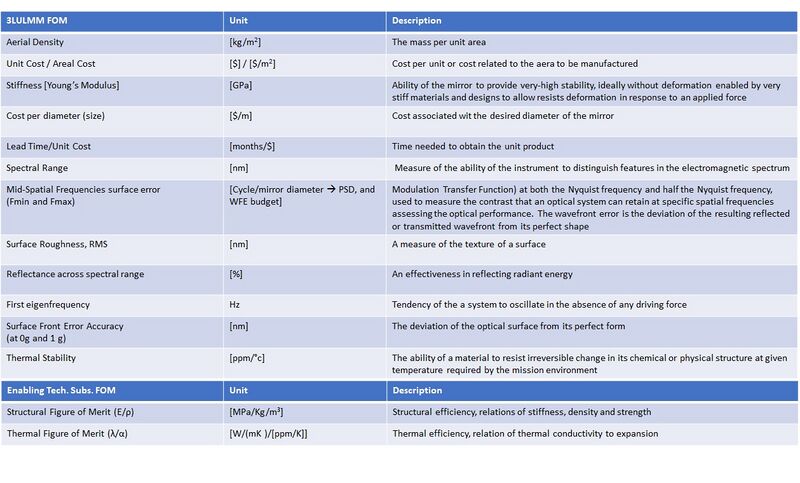
The table below gives some exemplary nominal reference values.
Important FOMs to achieve desired thermo-opto-mechanical performance are driven by generic equations/relations, design, and modeling. These are depicted in the table below.
Space agencies, notably NASA, carried out intensive developments for primary mirrors. Philipp Stahl when joining NASA, said [Ref 6-7], "When I joined NASA is 1999, the overriding mantra for Space Telescopes was Areal Density, Cost & Schedule". We can see in the figure below the targeted aerial density for the JWST with earlier demonstrators realized in the frame of the AMSD study. Several companies were working on parallel concepts, including KODAK or Ball Aerospace (recently acquired by BAE Systems), who built Beryllium mirrors with an aerial density as low as 9.8 kg/m2. However, this did not provide sufficient stiffness to upscale and survive the launch. Also, despite the initial requirements, the JWST mirrors have to be re-designed with a final aerial density of 28 kg/m2, while the initial concept aimed to achieve even below 15 kg/m2.
After several efforts and failures, many experts concluded that to achieve such a low aerial density necessary are thermal and mechanical FOMs driven by enabling low sub-system level technologies, as highlighted in the table above (Structural and Thermal FOMs for 4MASM). "Although I’ve come to think that Stiffness and Areal Cost are more important" (NASA Ref. 6-7).
Interesting developments were carried out for other mirrors, such as Herschel, the giant monolithic mirror (3.5 meters) for infrared astronomy missions manufactured in France. US companies began to work on SiC for space optics, including support coming from NASA. However, their primary focus was on SiC composites, and they failed to master the material properties, further abandoning these activities. The solution came by developing and manufacturing sintered silicon carbide in France, a very homogenous with low porosity and high mechanical strength. SiC powder is typically squeezed into solid blocks, where relatively soft blanks can be easily shaped into highly complex parts using computer-guided milling machines. The pieces are further placed into a furnace (approx. 2000°C) and baked into ceramics, then they become extremely hard and can be machined using diamond-headed grinding. The next important step was to invent the joining technology, which allowed the production of this gigantic mirror, as the SiC parts are typically small, with a maximum diameter of close to 1 meter achieved at that time. The French Nuclear Agency (CEA) developed the brazing joining technology that enabled 12 smaller segments to be joined together, thereby forming a 3.5 large mirror with an overall thickness of 3.5 mm and weight of 300 kg. The segments had to be shaped to optical precision with gaps between them of 10 microns.
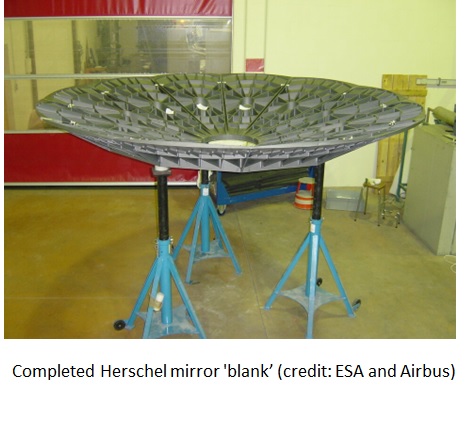 However, the GAIA mirror achieved h aerial density of the SiC blank less than 120 kg/m2, which is high compared to the further required progress. A surface shape test accuracy was better than 6 nm RMS, thickness inhomogeneity of the cladding layer was less than 5%, and the final surface figure error and roughness were 15.2 nm RMS and 0.8 nm RMS, respectively.
However, the GAIA mirror achieved h aerial density of the SiC blank less than 120 kg/m2, which is high compared to the further required progress. A surface shape test accuracy was better than 6 nm RMS, thickness inhomogeneity of the cladding layer was less than 5%, and the final surface figure error and roughness were 15.2 nm RMS and 0.8 nm RMS, respectively.
